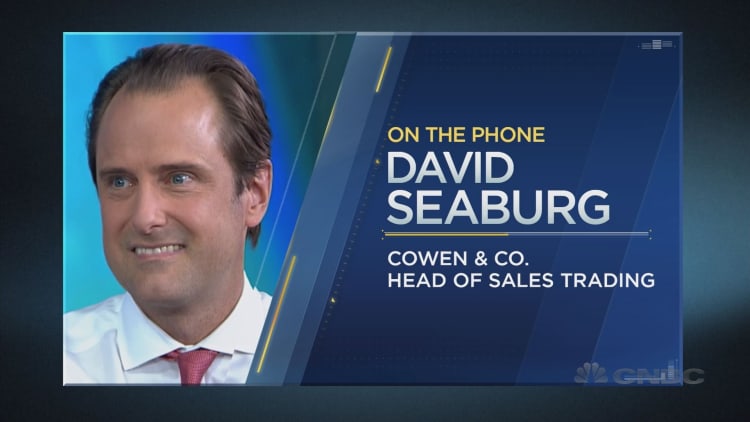
Two market watchers who set off alarms about Twitter see a similar problem for newly minted Snap shares, which surged 44 percent in their first day of trading.
David Seaburg, head of equity sales trading at Cowen & Co., called trouble ahead for Twitter in 2015, two years after its IPO. On Thursday, Snap's IPO day, Seaburg said the social media company behind Snapchat was designed to perform well at its IPO, given its share allocation structure.
"But going forward, when you think about this as a retail investor at home, 'Should I jump in at these levels?' given the fact that it was priced at $17 and now trading at $25, the key metrics when you're really valuing one of these companies is user growth and monetization," Seaburg said Thursday on CNBC's "Trading Nation." "And frankly, user growth — let's dissect these a little bit — user growth has really been decelerating," he said.
Indeed, Snap added 21 million daily active users worldwide between the first and second quarters of 2016, 10 million in the third quarter, and 5 million in the fourth quarter, according to the company's S-1 filing with the Securities and Exchange Commission released in early February.
"We anticipate that our Daily Active Users growth rate will decline over time if the size of our active user base increases or we achieve higher market penetration rates," the filing said.
A rather stagnant user base posing a risk to Snap was precisely what Pivotal Research Group analyst Brian Wieser wrote in a Thursday report entitled "Can't Get There From Here" in which he initiated Snap coverage with a sell rating. In fact, he initiated coverage of Snap with a bearish $10 price target for its first official rating.
"Snap is a promising early stage company with significant opportunity ahead of itself. Unfortunately, it is significantly overvalued given the likely scale of its long-term opportunity and the risks associated with executing against that opportunity," Wieser wrote.
Wieser downgraded Twitter to a sell rating in November 2013 immediately after shares were open for trading. Ahead of Twitter's IPO, he had marked the stock a buy. In his sell note, Wieser said Twitter did appear to be fairly valued, but key risks included "a relatively unproven" advertiser proposition, the prospects of "wild swings" in investor sentiment and government regulations related to privacy.
"There are some lessons to be learned from the Twitter IPO," Wieser told CNBC in a phone interview Thursday. He said some investors may indeed be optimistic about the company's intrinsic value, but others may be following the "greater fool theory" in which the stock's price is determined by irrational expectations.
"A difference with Snap is that I don't know that investors necessarily believe that," he said. "Maybe some do."
Seaburg added that Snap appears to be priced for a "best case scenario" in that its user base can grow, which will only be determined in its first quarterly report.
The company recorded $404.5 million revenue in 2016, representing a nearly 7 percent year-over-year growth from $58.7 million in 2015. However, Snap wrote in its S-1, "We have incurred operating losses in the past, expect to incur operating losses in the future, and may never achieve or maintain profitability."
After the first 30 minutes of trading Thursday, nearly 100 million shares of Snap had changed hands — about $2.5 billion of stock. By the end of the session, about 217 million shares were traded. Share prices rose as high as $26.05 and fell as low as $23.50, according to FactSet.





